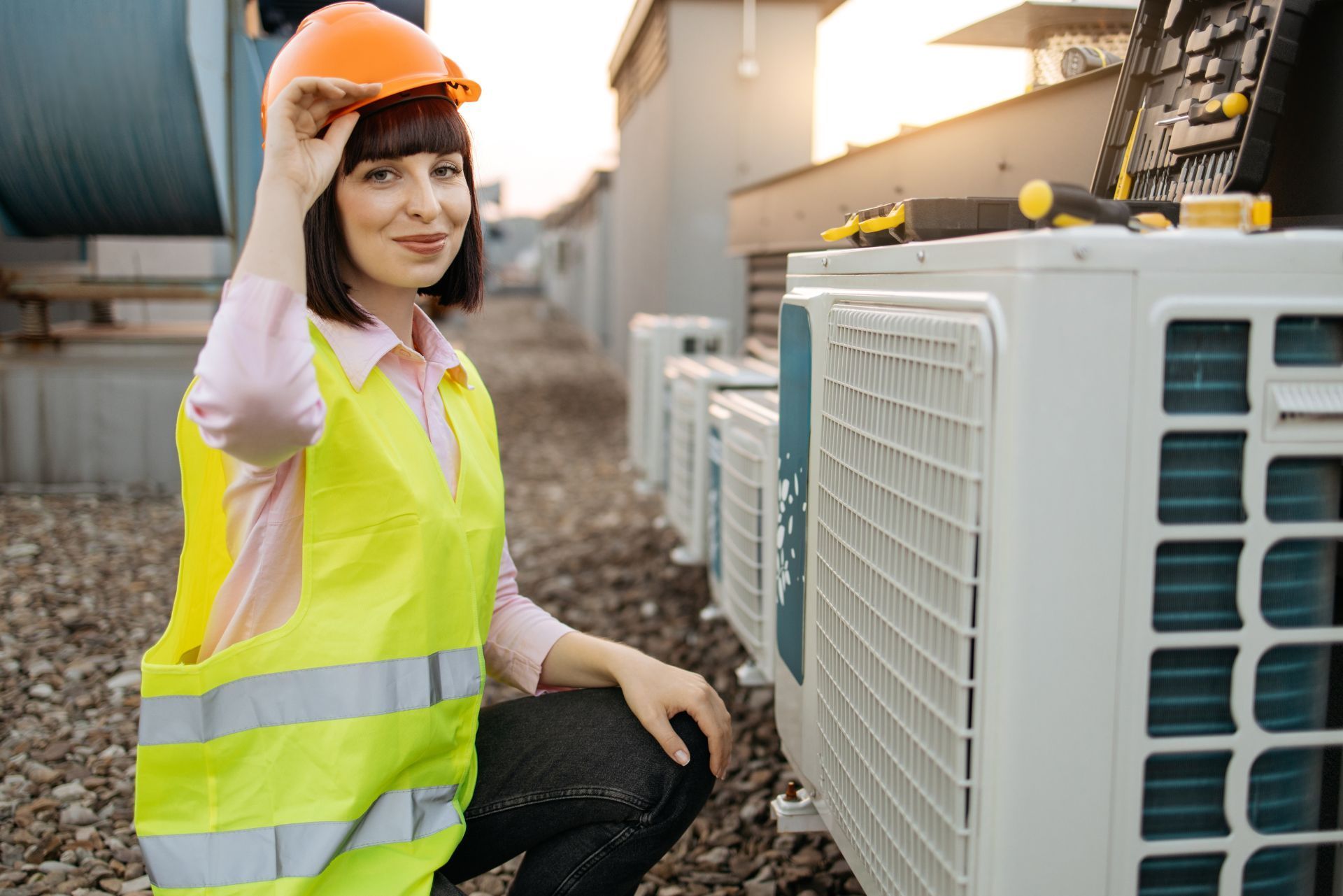Top 3 Recommended Policies

Iowa’s HVAC contractors know how unpredictable the weather can be. From freezing winters to humid summers and powerful storms in between, every season brings new challenges for both systems and service providers. With severe weather driving up claims and insurance premiums across the state, protecting your business has never been more important. This guide breaks down HVAC contractor insurance in Iowa, explaining what coverage you need, how local market trends are influencing prices, and what steps you can take to manage rising costs. By staying proactive about your insurance strategy, you can keep your business stable and prepared for whatever comes next.
Understanding HVAC Contractor Insurance in Iowa
HVAC contractor insurance typically includes general liability, workers’ compensation, commercial auto, and equipment coverage. These policies protect businesses from claims related to property damage, bodily injury, and other risks inherent in HVAC work. In Iowa, the cost of such insurance is influenced by several factors including the size of the business, annual revenue, and the state’s unique risk environment.
According to industry data, HVAC liability insurance premiums usually range from 1.3% to 2.6% of a contractor’s annual gross revenue. For small operations earning around $150,000 annually, the average premium is approximately $3,140. However, savvy contractors who shop around and compare quotes can reduce this cost significantly—to about $860 in some cases—highlighting the importance of competitive shopping for insurance policies (contractornerd.com).
In addition to the basic coverages, HVAC contractors in Iowa may also want to consider additional endorsements or specialized policies tailored to their specific needs. For instance, coverage for tools and equipment can be crucial, as HVAC work often requires expensive machinery that can be vulnerable to theft or damage. Moreover, some contractors opt for professional liability insurance, which can protect against claims of negligence or failure to deliver services as promised, offering an extra layer of security in a competitive market.
Furthermore, understanding the nuances of local regulations and compliance requirements is essential for HVAC contractors operating in Iowa. The state has specific licensing and insurance mandates that can affect coverage needs and costs. Contractors should stay informed about changes in legislation that may impact their insurance obligations, as well as any industry standards that could necessitate additional coverage. Engaging with a knowledgeable insurance broker who specializes in contractor insurance can provide invaluable insights and help ensure that all bases are covered, allowing contractors to focus on their core business operations without the looming worry of potential liabilities.

The Impact of Iowa’s Severe Weather on Insurance Rates
Iowa’s insurance market is currently classified as a “hard market,” meaning insurance providers are more cautious and premiums are higher. This shift is largely attributed to the state’s increasing exposure to extreme weather events. In 2023 alone, Iowa experienced 504 hail events—a staggering 133% increase from the previous year. These frequent and severe storms have led to more claims, higher repair costs, and, consequently, rising insurance premiums for homeowners and contractors alike.
Sonya Sellmeyer, a consumer advocate with the Iowa Insurance Division, remarked, “We’re not California or Florida or Louisiana … but we are in a hard insurance market, and it does follow with all these storms.” This statement underscores how local weather patterns directly affect insurance availability and affordability (iowacapitaldispatch.com).
Rising Home Insurance Premiums Signal Broader Trends
The challenges facing homeowners’ insurance in Iowa provide a useful parallel for HVAC contractors. The average annual home insurance premium in Iowa is projected to rise by 19% in 2025, reaching $3,825—about $300 higher than the national average. This increase is driven by severe weather damage and escalating repair costs, factors that also influence the commercial insurance market contractors rely on (northiowatimes.com).
Moreover, the rising insurance costs are not just a concern for homeowners; they also have a ripple effect on the local economy. As premiums rise, many residents may find themselves reconsidering their coverage options, potentially leading to underinsurance or even opting out of coverage altogether. This trend can leave homeowners vulnerable in the event of significant damage, which, in turn, could lead to a greater number of uninsured losses that ultimately affect the insurance market's stability. Additionally, contractors may face challenges in securing affordable liability and equipment insurance, which can hinder their ability to operate effectively and safely in an increasingly unpredictable climate.
Furthermore, the frequency of severe weather events has prompted discussions among policymakers and insurance regulators about the need for innovative solutions. Some experts advocate for the adoption of more comprehensive risk assessment models that take into account not only historical data but also predictive analytics to better forecast future weather patterns. This could lead to more tailored insurance products that reflect the unique risks faced by Iowans, potentially stabilizing premiums in the long run. As the state grapples with these challenges, the intersection of climate change, insurance, and local economies will remain a critical area of focus for both consumers and industry stakeholders.
How Insurance Market Changes Affect HVAC Contractors
The insurance market’s tightening has led to some insurers withdrawing from the Iowa market altogether. Doug Ommen, Iowa’s insurance commissioner, noted that five insurers stopped writing policies in the state during 2023 due to the increased frequency of severe weather and the associated rise in repair costs. This reduction in available carriers limits options for HVAC contractors and can drive premiums even higher.
For HVAC contractors, this means fewer choices and potentially higher costs when seeking liability and property insurance. The shrinking market also emphasizes the importance of maintaining a strong safety record and minimizing claims to keep premiums manageable. Contractors are increasingly finding themselves in a position where they must not only focus on their core services but also on risk management strategies that can help mitigate these rising costs.
With 443 HVAC contractors operating in Iowa as of August 2025, competition is robust, especially in hubs like Des Moines, which accounts for over 9% of all HVAC contractor locations nationwide. This competitive landscape makes managing overhead costs, including insurance, a critical factor in business success (poidata.io). As contractors navigate this environment, many are turning to technology and innovation to streamline operations and improve efficiency. For instance, the adoption of advanced software for scheduling, inventory management, and customer relationship management can significantly reduce operational costs, allowing contractors to allocate more resources toward insurance and risk mitigation.
Moreover, the tightening insurance market has prompted HVAC contractors to explore alternative insurance solutions, such as group purchasing arrangements or self-insurance options. These strategies can provide more flexibility and potentially lower costs, but they also require careful planning and a thorough understanding of the associated risks. As contractors adapt to these changes, the importance of building strong relationships with insurance brokers and understanding the nuances of policy options becomes paramount. This proactive approach not only helps in securing better rates but also fosters a culture of safety and responsibility within the organization, ultimately benefiting both the contractors and their clients.
Strategies for Managing HVAC Insurance Premiums in Iowa
Given the current insurance climate, Iowa HVAC contractors need to be proactive in managing their insurance costs. Here are some effective strategies:
- Shop Around and Compare Quotes: As noted earlier, premiums can vary widely. Contractors should obtain multiple quotes and negotiate terms to find the best coverage at the lowest price.
- Maintain a Strong Safety Program: Reducing workplace accidents and claims history can positively impact insurance rates. Insurers reward businesses with lower risk profiles.
- Bundle Policies: Combining general liability, commercial auto, and workers’ compensation insurance with a single provider can often lead to discounts.
- Increase Deductibles: Opting for higher deductibles can lower premium costs, but contractors must ensure they can cover out-of-pocket expenses if a claim arises.
- Invest in Risk Mitigation: Using quality equipment, adhering to safety standards, and training employees can reduce the likelihood of claims and insurance costs.
By implementing these measures, contractors can better navigate the rising insurance costs and maintain financial stability. Additionally, staying informed about industry trends and changes in insurance regulations can provide HVAC contractors with a competitive edge. Regularly attending workshops or seminars focused on risk management and insurance can help contractors understand the nuances of their policies and the factors that influence their premiums.
Moreover, fostering strong relationships with insurance agents can be invaluable. A knowledgeable agent can offer tailored advice and insights into the specific needs of HVAC businesses, ensuring that contractors are not only compliant with state regulations but also adequately covered against potential risks. Engaging in community initiatives or safety programs can further enhance a contractor's reputation, showcasing their commitment to safety and reliability, which in turn can lead to better insurance terms.

The Future Outlook for Iowa HVAC Contractor Insurance
The outlook for HVAC contractor insurance in Iowa remains challenging but manageable with the right approach. The state’s increasing exposure to extreme weather and the resulting insurance market shifts are unlikely to reverse soon. However, contractors who stay informed and adapt their insurance strategies will be better positioned to weather these changes.
Industry reports highlight Iowa as one of 15 states facing a “mounting insurance crisis,” ranking third for the highest year-to-date increases in homeowners' insurance premiums. This trend signals that HVAC contractors should anticipate continued premium increases and plan accordingly (iowacapitaldispatch.com).
Despite these challenges, the HVAC industry in Iowa remains vibrant, with a strong demand for services driven by both residential and commercial markets. Contractors who prioritize insurance planning and risk management will maintain a competitive edge and protect their businesses from unforeseen losses.
As the climate continues to change, HVAC contractors in Iowa may also find opportunities to innovate and expand their service offerings. For instance, the growing emphasis on energy efficiency and sustainable practices presents a chance for contractors to specialize in eco-friendly heating and cooling solutions. By embracing technologies such as smart thermostats and energy-efficient systems, contractors can not only enhance their service portfolio but also appeal to an increasingly environmentally conscious clientele.
Moreover, networking and collaboration within the industry can provide HVAC contractors with valuable insights into best practices for managing insurance costs. By participating in local trade associations and attending industry conferences, contractors can share experiences and strategies that have proven successful in navigating the complexities of insurance. This collective knowledge can be instrumental in developing tailored insurance solutions that address specific risks faced by HVAC professionals in Iowa.
Conclusion
Iowa HVAC contractors face a unique set of insurance challenges shaped by severe weather, a hard insurance market, and rising premiums. Understanding these factors is essential for securing affordable and adequate insurance coverage. By actively comparing insurance options, maintaining strong safety practices, and preparing for future market shifts, HVAC professionals in Iowa can safeguard their operations and thrive despite the evolving insurance landscape.
For more detailed information on HVAC insurance costs and strategies, contractors can explore resources such as
contractornerd.com or stay updated with state insurance developments through trusted news outlets like
iowacapitaldispatch.com.
Contact Us
HVACInsure is fully licensed and permitted to sell contractor and commercial insurance in Iowa.
We proudly serve clients throughout Iowa and maintain partnerships with local Iowa insurance carriers to ensure HVAC professionals receive compliant, affordable, and comprehensive coverage that meets project and regulatory requirements.

About The Author: James Jenkins
I’m James Jenkins, Founder and CEO of HVACInsure. I work with HVAC contractors and related trades to simplify insurance and make coverage easier to understand. Every day, I help business owners secure reliable protection, issue certificates quickly, and stay compliant so their teams can keep working safely and confidently.
